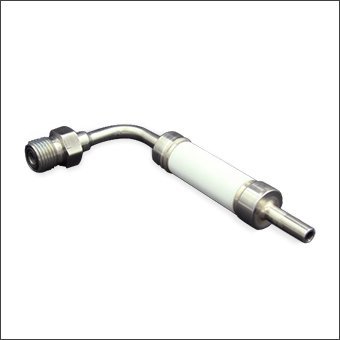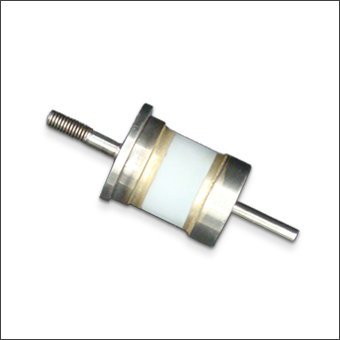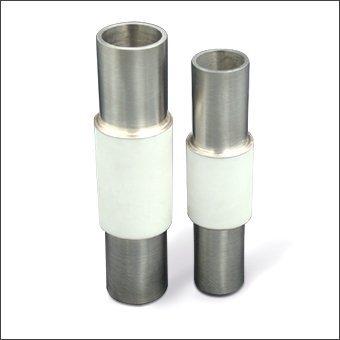Your Trustworthy Ceramic to Metal Brazing Partner
- High levels of hermetic and bonding strength
- Superb mechanical strength and electrical insulation
- Selection of ceramic materials for assemblies
- Kovar, Stainless Steel, OFHC copper availability
- Custom any specifications per your applications
- Rigorous hermetical and reliability inspection
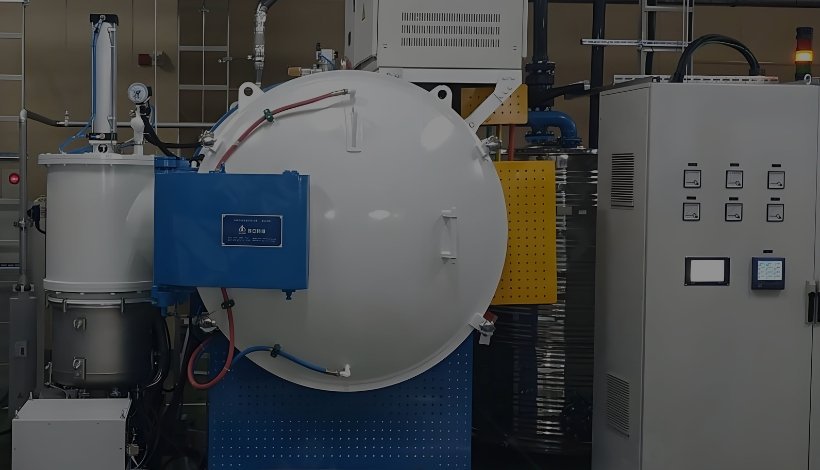
Your 1# Choice of Ceramic to Metal Brazing Manufacturer in China
Jinghui leverages its advanced ceramics manufacturing and brazing capabilities to produce a wide range of ceramic-to-metal sealing parts. These assemblies ideally combine outstanding electrical insulation, high-temp resistance, mechanical strength, and conductivity. The ultra-high vacuum and robust joining strength can be maintained perfectly in the assembly part, even in high temperatures, high voltage, high corrosion, and various challenging working conditions. Therefore, they are suitable for electronics, green energy, medical, semiconductor, aerospace,e and various high-end industries.
Using high-purity alumina (Al2O3) and aluminum nitride (AlN) ceramics as the matrix, combined with the innovative Mo/Mn method and active metal brazing process, it can achieve seamless connection between ceramics and various metal materials, and the leakage rate can reach less than 1×10⁻¹¹ Pa·m³/s. The physical strengths and hermetically failure test can be conducted by internal to ensure the reliability.
Apart from regular metallized ceramic tube with Mo/Mn metallization with nickel joining type, we also support various special-shaped ceramic structural part with optional metal plating (copper, silver and gold), as well as multi-interface integrated design to meet customized needs. Therefore, please share with us your specifications today if you are looking for a ceramic to metal assemblies’ partner.
By Uses
Ceramic-to-metal brazing products have a wide range of applications, such as medical, vacuum electronics, and green energy. Refer to the ceramic to metal assemblies we have ever produced
For transmitting electrical signals and electricity under high pressure, high vacuum, or extreme environments.
It integrates the characteristics of resistance to extreme environments and efficient, quick heat dissipation.
Ceramic feedthroughs play an important role, which directly affects the coating quality and equipment reliability.
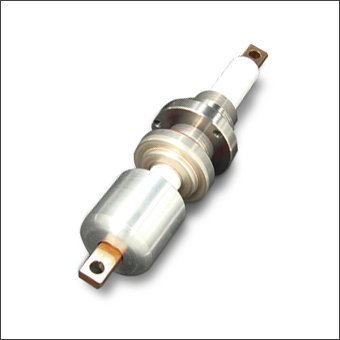
An essential component in ultra-high vacuum (UHV) environments for transmitting high-voltage current or signals.

Ceramic feedthroughs have solved core issues such as heat dissipation, insulation, gas hermeticity, and brazing strength in laser pumping.

Ceramic feedthroughs are a very common use for X-ray tubes in the medical field, especially in vacuum medical devices.
In vacuum low-voltage systems, ceramic feedthroughs are the optimal solution that takes into account sealing, insulation, and thermal management.
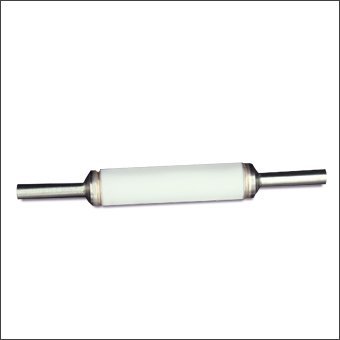
It simultaneously addresses the issues of heat dissipation and static protection for high-power, high-precision devices.
A Brief Guide of Ceramic to Metal Brazing
What is ceramic to metal brazing
Ceramic-to-metal brazing is a method of joining metals and advanced ceramics with different thermal expansion coefficients and different chemical bond types by melting the filler metal. The core of the process is to use the melted brazing material to wet the ceramic and metal surfaces, fill the connection gap through capillary action, and form a strong metallurgical bond after cooling.
Why brazing ceramic to metal
The core value of brazing ceramic-to-metal is to achieve complex working conditions that cannot be met by a single material through reliable high-performance connections. For example, the assemblies own the high-temperature resistance, insulation, fast heat dissipation, chemical stability of technical ceramics, and the electrical conductivity and mechanical support properties of metal parts.
How to realize ceramic to metal brazing
The process of ceramic to metal brazing mainly includes 4 steps as follows:
- Material pretreatment, including both ceramic and metal surfaces.
- Braze selection and matching, in common case, active braze, inactive braze and coefficient of thermal expansion (CTE) matching are three aspects to consider.
- Fixing and assembly, are related to fixtures in the assembly process.
- Brazing process parameter control: They refer to operation temperature, brazing atmosphere, holding time of the temperature, Heating rising/cooling fall rat,e and so on.
- After treatment, including oxidation residue removal, annealing,g, and physical & vacuum level inspection.
Typical materials used
In the vast majority of cases, the brazed components include 5 kinds of materials:
- Fine ceramics
-Oxide ceramics : alumina (Al2O3), zirconia (ZrO2) and Sapphire (Al₂O₃ single crystal)
-Non-oxide ceramics: aluminum nitride (AlN), silicon carbide (SiC) and silicon nitride (Si3N4) - Metal materials
Typical metals: stainless steel, copper (Cu), aluminum (AL) and titanium (Ti)
Special metals: Kovar alloy, tungsten (W), and Molybdenum (Mo) - Brazing filler
-Active: include Silver base filler metal ( such as Ag-Cu-Ti ), Copper base filler metal ( such as Cu-Sn-Ti, Cu-Ni-Ti), and gold base filler metal ( such as Au-Ni-Ti)
-Inactive filler metal: regular fillers ( such as Ag/Cu, and Sn/Pb) and high-temperature types (such as Ni-base and Pb base) - Surface metallized material
-Mo-Mn method: a thick film technology and sinter Mo-Mn on the ceramic surface
-Thin film method: apply titanium (Ti), platinum(Pt), gold (Au) onto the ceramic surface through vacuum sputtering and evaporation
-Direct bonding: includes electroless Ni plating, direct copper bonding (DCB), and physical vapor deposition (PVD)
It mainly covers nickel (Ni), copper (Cu) and tantalum (Ta), they can ease the thermal stress well after brazing process. - Intermediate layer/buffer layer material
It mainly covers nickel (Ni), copper (Cu), and tantalum (Ta), they can ease the thermal stress well after the brazing process.
Highlighted Features
Compared with mechanical connection and glue sealing, brazing of ceramic and metal parts has the following obvious advantages:
- Enables efficient bonding of heterogeneous materials
- Perfectly solve the thermal performance adaptation between ceramics and metals
- High-temperature stability, suitable for various extreme environmental applications
- High hermetical(over 1*10⁻9Pa) and environmental adaptability
- Process flexibility and operation controllability (vacuum or inert gas atmosphere)
- High function reliability and super long service life
The typical uses
Ceramic and metal brazing is a key material connection technology and an indispensable technology for high-end manufacturing industries, such as high-vacuum, high-voltage semiconductors, new energy, and aerospace.
Jinghui can braze ceramic to metal by means of flux, the type of flux include solder spacer, wire and paste. The brazing process is commonly conducted in vacuum, inert gas atmosphere or reducing atmosphere furnace.
The main method for joining ceramic to metal at our facility is brazing. A metallic layer will be deposited onto the specific ceramic surface to increase the brazing wettablibity and flowability, and then braze ceramic and meta parts together in the special furnaces.
In the ceramic-to-metal brazing field, not all metal materials are suitable for brazing with technical ceramics, the typical metal materials have the following distinct features:
- Metals with thermal expansion coefficients that are severely mismatched with ceramics
- Metals that are easily oxidized or chemically incompatible
- High or low melting point metals
Yes, It’s feasible to braze without flux. However, certain conditions need to be met, such as the use of appropriate atmosphere protection, self-fluxing brazing filler metals or special processes. At the same time, it is necessary to balance the cost, equipment requirements and welding quality to ensure that the needs of the actual application are met.
In most mass production, the use of flux for ceramic and metal brazing products is a more mature, more reliable and more economical choice.
The core difference between brazing and soldering is as follows:
- Brazing: does not melt the base material, relies on brazing filler metal to wet, is suitable for dissimilar materials, and is used for precision parts.
- Welding: melts the parent material, creates a strong connection, but has an enormous thermal impact, and is suitable for the same type of materials.





